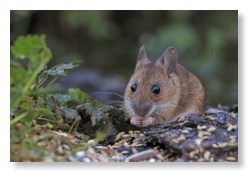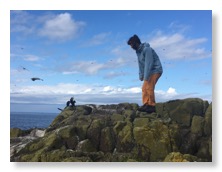Ageing in the wild
Which environments cause rapid ageing?
Questions about age and the ageing rate benefit from accurate biomarkers of age. Epigenetic biomarkers based on DNA methylation (DNAm) provide such a tool. 'Epigenetic clocks' can estimate the age of a human to within a few years, or a mouse to a few days. Stress, lifestyle, infection and reproduction cause clocks to tick faster, so in addition to estimating chronological age, epigenetic clocks can reveal biological age by identifying individuals who are age-accelerated. In humans, disentangling the causal relationships between DNA methylation, environment, and ageing is difficult, but with our study organism, the wood mouse Apodemus sylvaticus, we uniquely manipulate wild environments to identify the drivers of senescence.
Applying an epigenetic clock to wild animals is exciting, and through studying animals in the wide range of environments that they experience, we can uncover many more of the important and general drivers of ageing.
Our main study organism is the wood mouse, but we also have projects on wild house mice, the European shag and the waterflea Daphnia magna



Don't just read, join us: PhD project linked to our NERC-funded project on Ageing in the Wild